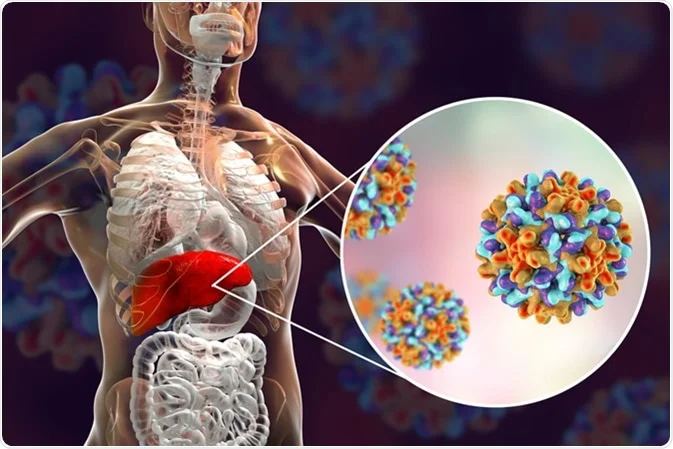
Testing for all persons 18 years of age or older while prenatal testing as part of routine care is recommended for each pregnancy.
By. Dr. M. Masood Khoso
HCV is a single stranded RNA virus, genus Hepacirus, family Flavi viradae having six genotypes. The credit of discovery of HCV goes to Michael Houghton, Harvey Alter and Charles Rice for which they are awarded 2020 Nobel Prize in Medicine. Their contribution has given better hope to mankind to cure HCV for the first time in history.
Global HCV prevalence declined from 63.7 million in beginning of 2015 to 56.9 million in beginning of 2020. In 2020, prevalence was highest in Eastern Europe and Central Asia. Greater than 50 % of infections were in China, Pakistan, India, and Russia. In Pakistan, overall prevalence of Hepatitis B and C is 2.5% and 4.8% respectively with combined infection rate of 7.6% in general population.
HCV is mainly transmitted via blood borne i.e. transfusion or intravenous drug abuse as high risk and needle sticks, body piercing, tattooing, and acupuncture with unsterilized needle as low risk transmission including from pregnant mother to child.
World Health Organization vision is to eliminate viral hepatitis as major health threat by 2030. That can be achieved either by preventive measure i.e. improve blood safety and infection control to diagnosis testing and treating.
US Preventive Services Task Force and AASLD recommends, one time, routine and opt out testing for all persons 18 years of age or older while prenatal testing as part of routine prenatal care recommended for each pregnancy.
Investigations include HCV antibody test followed by HCV RNA PCR, genotype if needed and also to exclude advance fibrosis or cirrhosis.
Treatment depends upon eligibility for simplified treatment or not i.e. adults with HCV infection, treatment naive or experienced and with or without cirrhosis.
Because of virological efficacy, ease of use, safety and tolerability, Interferron free, Ribavarin free, DAAs based must be used in HCV infected patients without cirrhosis or with compensated cirrhosis.
Treatment should be considered in advance or severe liver disease to avoid HCC, patients with post liver transplant recurrence should be considered for therapy.
Treatment must be given in renal impairment with careful monitoring as per guidelines and eGFR.
WHO elimination targets can only be achieved with effective screening, diagnosis and linkage to care.
Pangenotypic therapy allows simple algoirthms to effectively and safely provide treatment to large group of individuals with high SVR rates.
_____________
 Dr. M. Masood Khoso, FCPS, MACG (USA) is Consultant Gastroenterologist at Jinnah Postgraduate Medical Center (JPMC) Karachi, Sindh where a workshop on Hepatitis is being held today – July 29, 2022.
Dr. M. Masood Khoso, FCPS, MACG (USA) is Consultant Gastroenterologist at Jinnah Postgraduate Medical Center (JPMC) Karachi, Sindh where a workshop on Hepatitis is being held today – July 29, 2022.